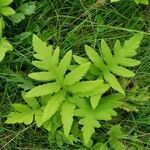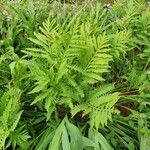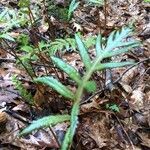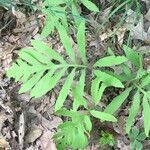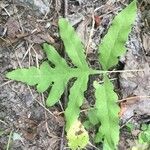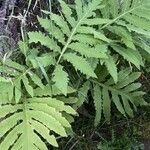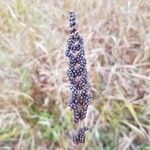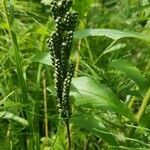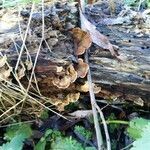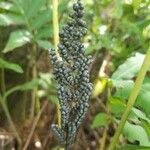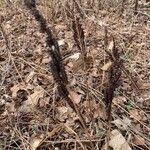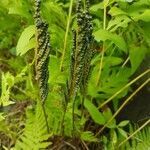A deciduous fern. It grows 30-60 cm high and can spread indefinitely sideways. The sterile fronds are bright green. They can be bronze-pink in spring and yellow in autumn. They are large and broad like an oak leaf. The fertile fronds with spores are stiffly upright and are shorter. They are like a small cluster of green balls. They turn dark brown.
